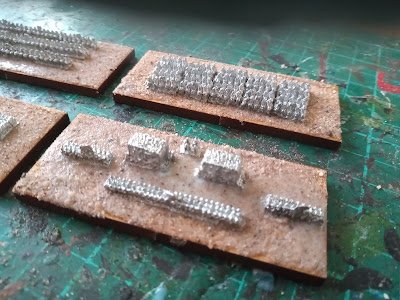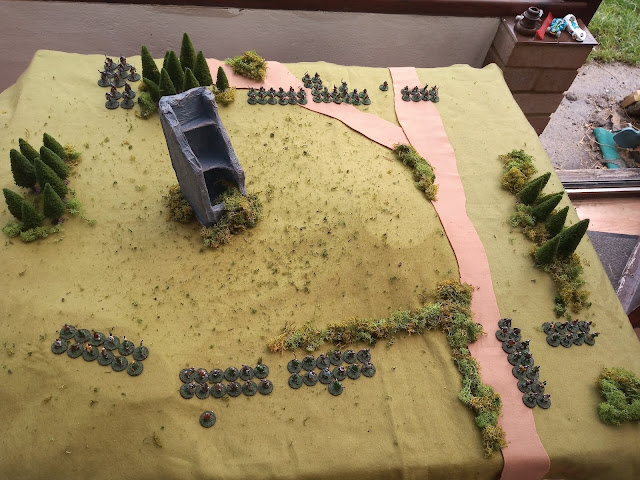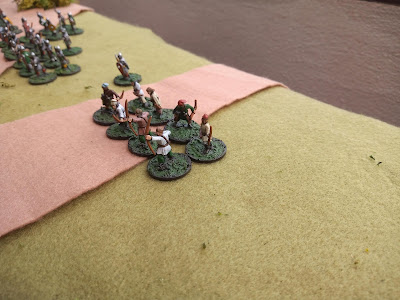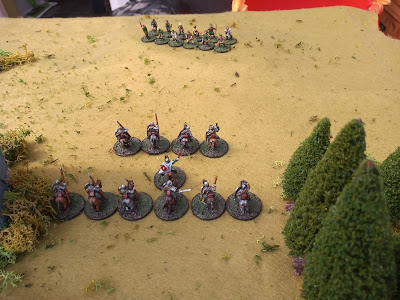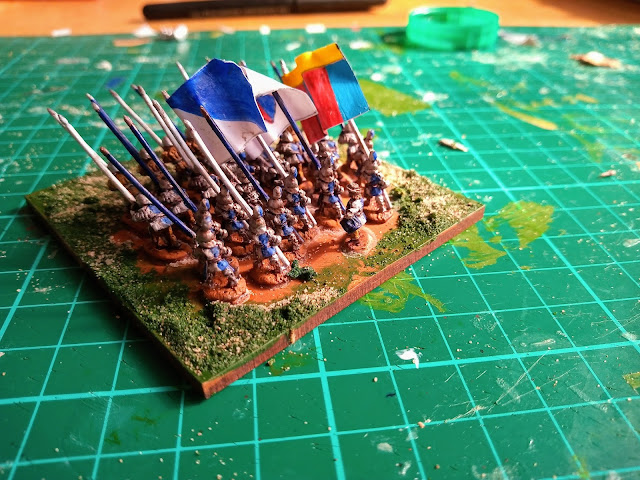Hobby time has been rarer than purple hydra droppings of late, I have however managed to grab a quick half hour to conduct a little experiment.
First I think a small sprinkle from the shower hose of context may be in order. As all three of my regular readers will know I do like to bodge together my own settings in which to game. One such setting that I keep returning to is that of Olde Albilande. Now I may not have been able to physically hobby lately but the tiny squishy pile of biological matter I call my brain has not been idle oh no, it's returned to this festering isle with some quaint remodeling and ideas for campaigns yet to be played. Now this is a good thing (to me at least) but would require a bucket load of painting to be done. The thing that has always hobbled my plans to make this kind of thing a reality is the volume of miniatures needed. In my normal choice of miniature scale that is...
But there exists a scale where painting up an army or two in a matter of days is very achievable, a scale in which I have dipped enough toes to have a decent working knowledge of just how wet with possibilities it is. I speak of course of 2mm, where all men are modelled equally (tiny) and impressionism is everything!. My arrival at this decision went like this:
Brain (B):dooldalbilande,dooldalbilande,dooldalbilande,dooldal...etc
Me: Eh, sorry I wasn't listening.
B: you never do, that's why your life is such an utter pile o...
Me: Shut up or I'll start drinking again, see how you do with even less cells.
B: Bloody charming!. That's why I never talk to you anymore.
Me: did you want something?.
B:Yeah actually, I was saying dooldalbilande,dooldalbilande,dooldalbilande,dooldal...
Me: This again?, Look I can't be bothered to paint 4 whole forces just to play a campaign.
B: 6 forces.
Me: what?
B: 6 forces, I made some changes.
Me: well definitely not then, think on you useless squidgy tosser!.
B: You never do what I want.
Me: that's because all your ideas are mental, listen to me: I DO NOT WANT TO PAINT FIFTY BASQUILLION MINIS!.
B: You don't have to I have a good idea.
Me: For once.
B: Piss off, no you can do each army in 1:1 scale in no time.
Me: Have you been drinking?.
B: No just listen for once. What about 2mm?. You can paint loads of them.
Me: You may have a point there... I'll alert the media.
B: oh do fuck off, it's a good idea though isn't it?.
Me: maybe...
And on it went. I did however have some reservations. I can do lots of pretty cheap forces in no time but if I'm doing this I'm doing it in 1:1 scale and I'm taking time to do it to the best of my abilities (which isn't saying much!).
I went looking for inspiration and stumbled upon this post on the rather good Roundwood's world about modeling and painting some thirty years war forces. Now this approach to creating bases in 2mm really caught my interest. So the above experiment happened:
Some bases in the Roundwood style. They are ment to be from Old Albilandes early pike and shot period (about 1570 in our time, sort of after the Italian wars but before the Thirty years war)
Two infantry units, a mix of pike and handguns. The first has pike blocks between ranks of shot with two small 'folorn hope' units out front (in Albilande these units are normally made up of the least popular handgunners). The second is more of a loose formation with shot out front and on the wings.
A unit of reiters in three ranks ready to unload a barrel of caracole on someone.
I snapped these while the glue was still wet but hope to get them painted up soon. I'm pretty happy with them so far, I think a table full of these could look rather great so long as I manage to paint them effectively. The idea is to do the required forces in this scale to game some big battles then maybe do smaller forces in 10mm (or maybe even 15mm) for in between battle skirmishers. Well that's the plan anyway...
...'till next time...




